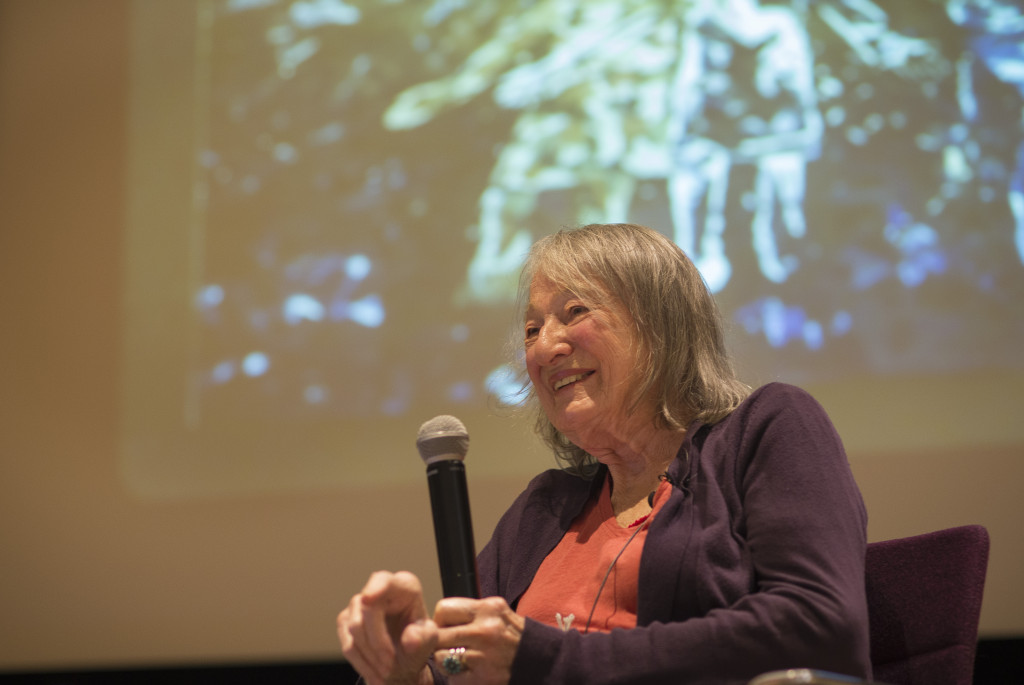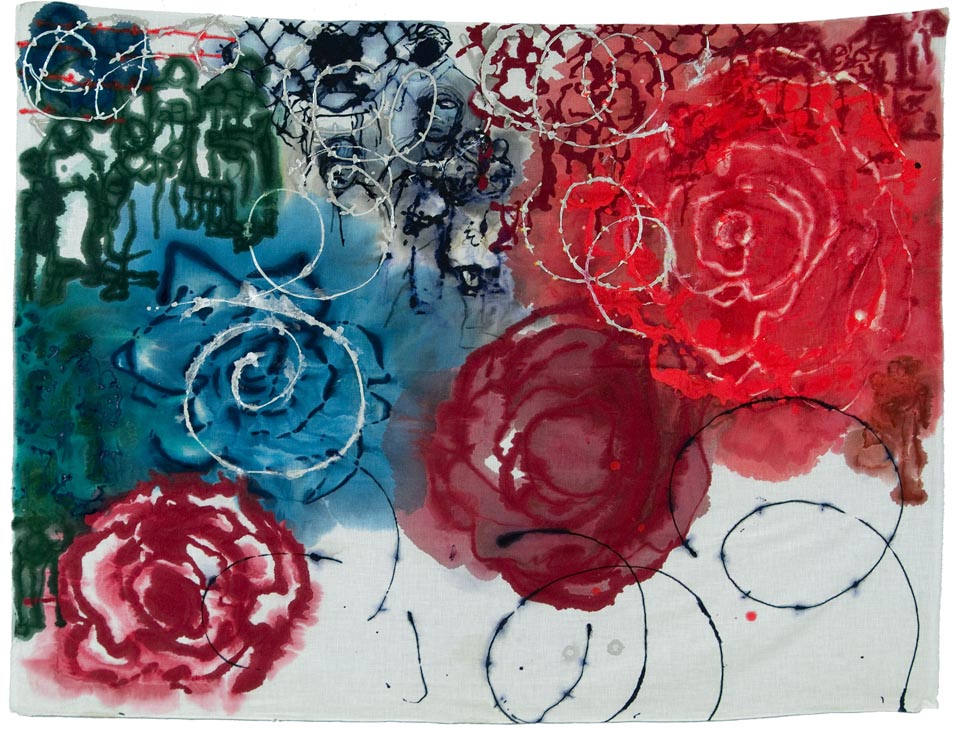This week’s contributing writer, Tara Foster, is an interdisciplinary creative and arts administrator, whose work exists at the intersection of place-based community cohesion and contemporary art. She recently returned to her hometown of New York City after nearly a decade of Southern living, most recently serving as the Program Associate for Artist Support at the Joan Mitchell Center in New Orleans.
On a chilly October night, a large crowd gathered at the Museum of the City of New York’s auditorium to bask in the warmth of Henrietta Mantooth’s presence, during her CALL/VoCA Talk with VoCA Program Committee member, Jennifer Hickey. Perhaps the first thing one notices about Henrietta is her big, bright smile. Like her sprawling paintings and installations, her personality is resplendent.
Speaking to a rapt audience, Henrietta shared how she has maintained such a dedicated, multifaceted art-making practice over the course of her long life. Henrietta is a storyteller after all, and so, she told us her stories: anecdotes about her happy childhood amidst the economic uncertainty of the tumultuous 1920s and 30s; her journalistic career throughout Central and Latin America; her forays into theatrical production; and her love of family, both blood and chosen.
The more we learn, the more we seek to know: this seems to be a guiding principle of Henrietta Mantooth’s life and work. Her multidisciplinary practice spans seven decades, and yet, she is always striving to learn more and improve upon her abilities and craft. Referencing Picasso, Henrietta shared that “painting is a series of destructions…you have to demolish what you have in order to paint over it…it’s a matter of getting rid of the status quo – in yourself and everything you’re trying to destroy.” Henrietta’s work distills universal themes such as family, loss, and displacement down to their very essence, walking us through a hazy, dreamlike world where symbols and totems loom large to tell the stories of a given time and place. Like a dream, her paintings and drawings are sometimes soft and wistful, just barely in view, while at other times obscure and chaotic as a nightmare. Still, in that cacophony of deep, rich color fields, it is the focus on connection and touch – be it family members, strangers, or birds – that captivates viewers.
Extolling the Joan Mitchell Foundation’s critically important Creating a Living Legacy (CALL) Program, Henrietta shared how the process of documenting and archiving her work opened her eyes to the story these pieces tell as a cohesive unit unto themselves: “I discovered it. Probably for the first time, I saw the trajectory of it, my work.”
Her fellow artist and dear friend Mary Frank writes: “[Henrietta] has a great ability to take risks in order to touch and be in touch with the human condition and to remain intimate with her materials…She once was described as ‘an artist who uses freedom to express freedom.’”[1] Unafraid of new materials and new ideas, Henrietta has focused her recent artistic production on merging her various talents of set design, poetry, and visual storytelling into participatory installations where visitors are invited to step inside of her paintings to, quite literally, share their own stories. That October evening Henrietta mused that, “people are reluctant to walk on art…but once people step into it…it’s like you step out of the ordinary world, and here you are in a place that brings back memories, that brings back desires…it allows you to show off, which is a great thing, I want everybody to show off.”
Building on her desire for everyone to show off, alongside her lifelong interest in the U.S. prison system, Henrietta used her 2014 solo exhibition at the Kleinert James Center for the Arts (Woodstock Byrdcliffe Guild) in Woodstock, NY to mount a 30’ installation entitled Jail Birds and Flowers. After reading a message left in a guest book from the exhibition, Henrietta found herself compelled to continue with this body of work, addressing themes of systemic racism, mass incarceration, and racial injustice. In 2015, she installed Jail Birds and The New Jim Crow in nearby Catskill, NY at the Greene County Council for the Arts Gallery. “Even though it was a much smaller gallery [than Woodstock], I think it was even more intense. The gallery is on Main Street, and the window is on Main Street, and it drew people in…they were curious, they didn’t know what they were getting into…I think the colorfulness of the birds didn’t seem so dire, visually, and so the message was able to get across,” Henrietta reflected, recognizing that her art can act as a powerful, subversive tool for social change.

Henrietta Mantooth, Caged America, 2015, from the installation series “Jail Birds and The New Jim Crow,” presented at the Greene County Council for the Arts Gallery, Catskill, New York
At the time of Henrietta’s talk, the U.S. was still deep in the throes of an aggressive presidential race, tense with the potentiality of having our first female president versus a pompous demagogue. Now, several weeks later, we find ourselves confronted with the reality of a President perhaps presciently found amidst Henrietta’s 1980s paintings, Meeting: Status Quo or Men Making Decisions. The latter painting is one Henrietta plans to use as the inspiration for a new body of work during her time in residence at the Joan Mitchell Center in New Orleans.
In this political moment where it is ever more incumbent upon white people to step up and speak out about this country’s vast racial and ethnic inequities and injustices, Henrietta’s work becomes increasing powerful. During her CALL/VoCA Talk, Henrietta told us of her regular, informal interviews with strangers on the topic of segregation, acknowledging that “it is so important to talk about how this [violence of segregation] has affected our lives, all of us, this affects all of our lives.”
Henrietta left us by paraphrasing a line from a Jack Gilbert poem: “with destruction and sorrow every place, we still must risk delight.” She is embodied proof of embracing destruction and risking delight. Let us all carry forward Henrietta Mantooth’s living example to be bold, fearless, and joyful as we go forward into the difficult days ahead.
A video of this Talk is available at https://vimeo.com/209764335.
[1] Frank, Mary. “A Risk-Taking Artist.” Persimmontree Magazine, Issue 8 (Winter 2009) http://www.persimmontree.org/articles/Issue8/articles/MaryFrank_ARiskTakingArtist.pdf



